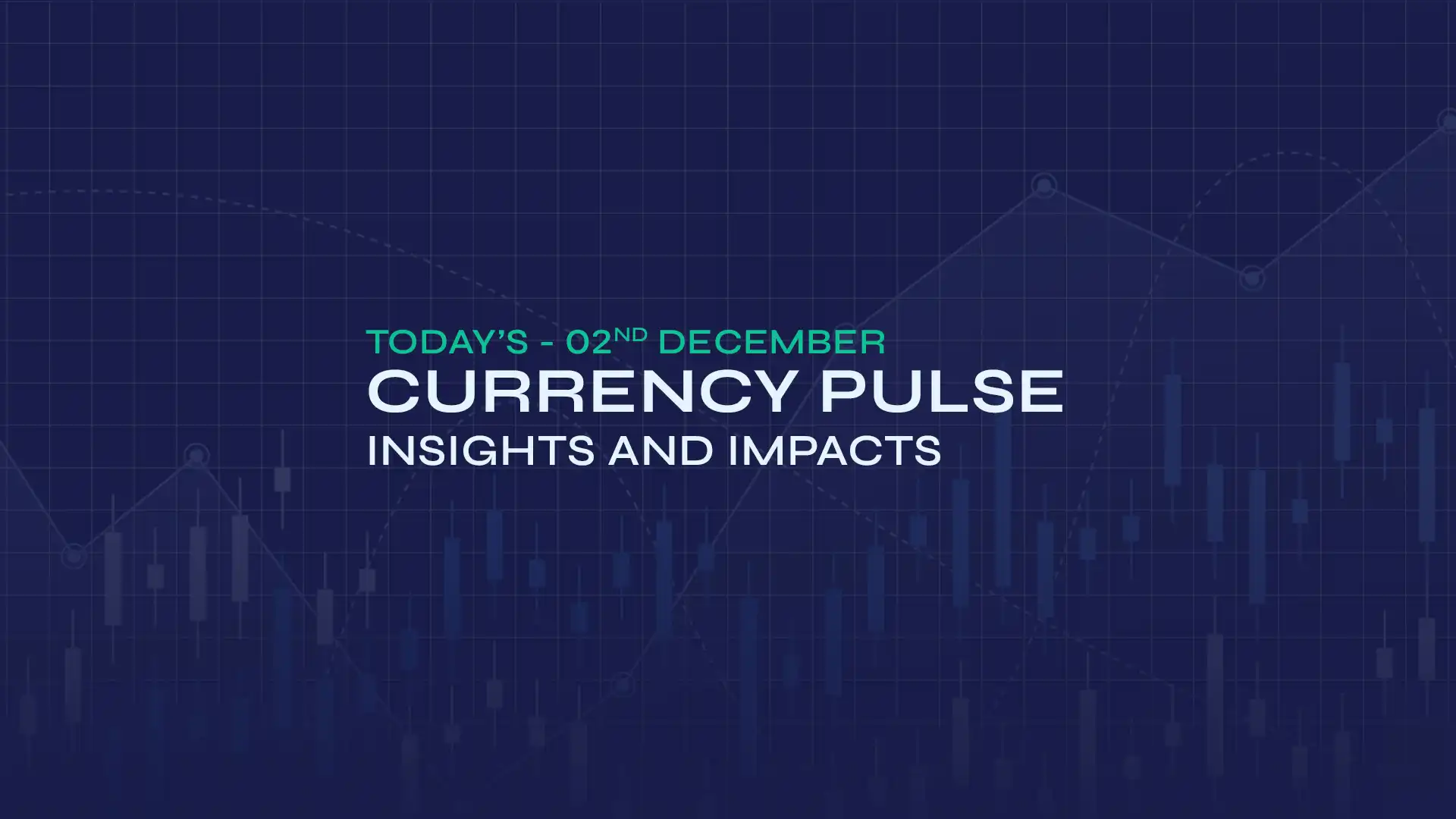EUR/GBP climbed to 0.8675, following the release of the UK Consumer Price Index (CPI) inflation report. On Wednesday, the UK's Office for National Statistics released data indicating that the headline CPI increased by 3.6% year-on-year in June, up from 3.4% in May. This figure exceeded the market consensus of 3.4%. The Core CPI, which excludes the more volatile food and energy prices, rose by 3.7% in June compared to 3.5% previously, surpassing the expected 3.5%. Additionally, the UK's monthly CPI inflation rate increased to 0.3% in June from 0.2% in May, against market expectations of a 0.2% rise. Signs of rising price pressures should prompt the BoE to advocate for maintaining a restrictive monetary policy stance. However, the UK central bank may need to navigate a delicate balance when discussing interest rates at the August monetary policy meeting, amid increasing inflation and a cooling labour market. The boost in employers' social security contributions by Chancellor Rachel Reeves has caused a slowdown in hiring. Investors are now waiting for the upcoming job data for the three months ending May, which is set to be released on Thursday, to get new insights into the UK labour market..
On the euro front, renewed trade tensions between the US and the European Union (EU) could limit the currency's upside. The recent German ZEW Economic Sentiment Index showed a stronger-than-expected rise in investors' economic confidence, climbing to 52.7 from 47.5 in May, surpassing the expected reading of 50.0. The sentiment regarding the current economic situation also improved more than anticipated, reaching -59.5 from -72.0 in the previous month. Similarly, Eurozone industrial production accelerated beyond expectations in May, increasing by 1.7% month-on-month, exceeding forecasts of a 0.9% rise, while April's figure was revised upwards to a 2.2% contraction from the previously estimated 2.4% decline. European Central Bank (ECB) policymaker and Bundesbank President Joachim Nagel said Tuesday, "Politics with a steady hand is currently required to deal with the uncertainty unleashed by US President Donald Trump's latest tariff threat." He added, "The effect on prices of both the geopolitical environment and the trade conflict with the United States was extremely uncertain."
Broader market sentiment around the US-EU trade deal and UK labour market data will influence the EUR/GBP exchange rate.
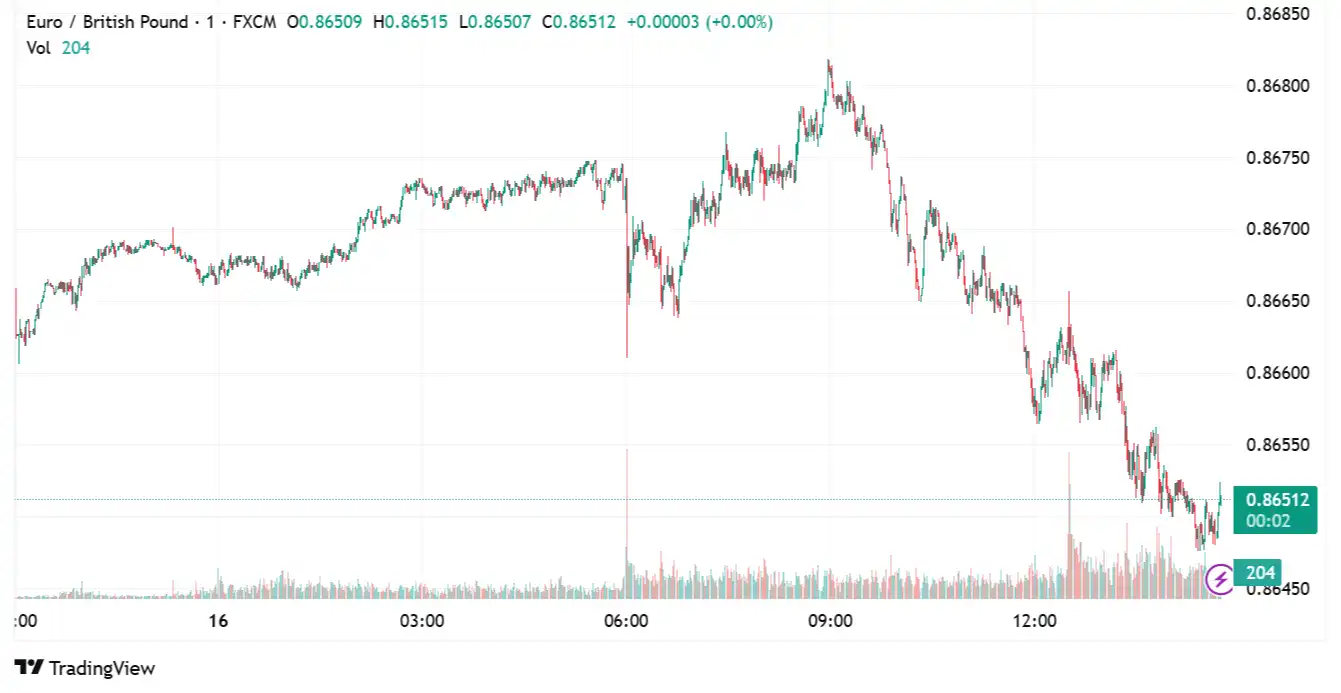
USD/CAD Hovers Following Inflation Data from Canada and the US
USD/CAD traded near 1.3709, as the market digested fresh inflation data from both Canada and the United States. Canadian inflation, as measured by the change in the Consumer Price Index (CPI), increased by 1.9% annually in June, Statistics Canada reported on Tuesday. This figure aligned with market expectations but exceeded the previous 1.7%. On a monthly basis, the CPI rose 0.1% after a 0.6% increase in May, also meeting expectations. The core CPI, which excludes volatile food and energy prices, grew by 2.7% annually, above May's reading of 2.5%. Canada's manufacturing sales decreased by 0.9% to $68.7 billion in May, reaching the lowest point since January 2022. Meanwhile, wholesale sales (excluding petroleum, petroleum products, hydrocarbons, oilseed, and grain) increased slightly by 0.1%, totalling $84.2 billion in May. Hotter-than-anticipated inflation numbers have reinforced market expectations for the BoC's cautious stance, making another rate cut at the upcoming 30 July policy meeting less certain.
Conversely, renewed optimism, driven by US President Donald Trump's willingness to further engage in trade talks, weakened the greenback. Trump suggested the potential for negotiations with the European Union (EU) and other important trading partners, which could alleviate investor worries about escalating trade disputes. On Tuesday, June's US CPI confirmed that the impact of higher tariffs on imports is starting to filter through the economy. The headline inflation rate accelerated to 2.7% year-on-year from 2.4% in the previous month, and the core CPI rose to 2.9% yearly from 2.8% in May. Month-on-month consumer inflation grew by 0.3% and 0.2% respectively. The hotter-than-expected US inflation report has reduced market expectations for the US Federal Reserve (Fed) to keep rates unchanged at the July meeting and then cut by a quarter of a percentage point in September. The US Producer Price Index is forecast to decline by 2.5% year-on-year in June, down from 2.6% previously. The monthly PPI is expected to increase by 0.2%, compared to the previous 0.1% gain. This will be the highest rise in five months. The core producer inflation, which excludes volatile food and energy prices, is expected to fall to 2.7% year-on-year from 3%, while the monthly core PPI is forecast to rise by 0.2% in June, after a 0.1% increase in May.
Upcoming US Producer Price Index (PPI) data, followed by the Fed Beige Book and Industrial Production figures, along with speeches from influential FOMC members, will influence the USD/CAD exchange rate.
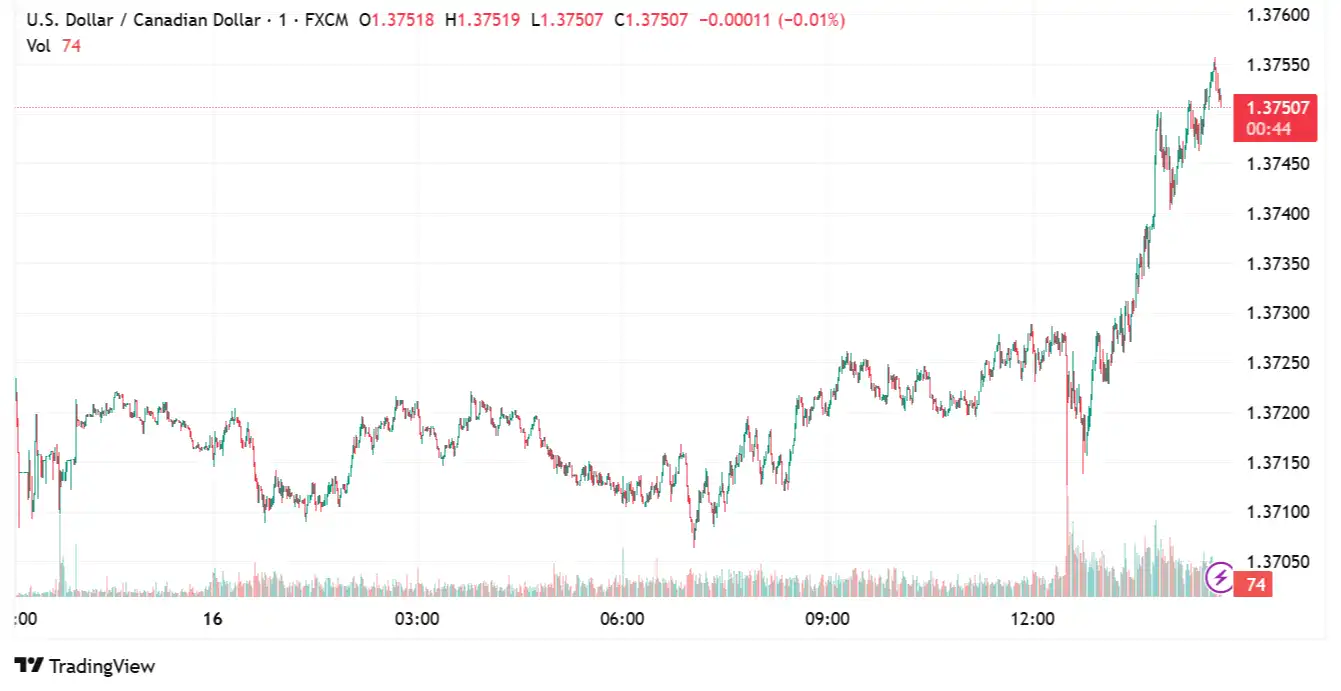
GBP/JPY Wobbles Following UK Inflation Data
GBP/JPY trades near 199.37, following the release of a hotter-than-projected United Kingdom (UK) Consumer Price Index (CPI) data for June. The United Kingdom (UK) headline Consumer Price Index (CPI) increased by 3.6% year-on-year in June, following a 3.4% rise in May, according to data released by the Office for National Statistics (ONS) on Wednesday. The market forecast had been for a 3.4% increase during that period. The figure diverges from the Bank of England's (BoE) 2% target. The core CPI (excluding volatile food and energy prices) rose 3.7% year-on-year in June, compared to a 3.5% rise in May, and exceeded the estimated 3.5%. The ONS stated that "transport, particularly motor fuels, made the biggest upward contribution to CPI annual rate in June." Services inflation remained steady at 4.7% year-on-year in June. Meanwhile, UK monthly CPI inflation increased to 0.3% in June from 0.2% in May, surpassing expectations of 0.2%. Bank of England (BoE) Governor Andrew Bailey took the time to subtly criticise the United States (US), particularly the Trump administration's volatile tariff and trade policies that shift almost daily. He noted that countries with large deficits will be the first to suffer market pain as financial stability declines. Bailey also responded to the US's recent criticism of the International Monetary Fund (IMF), reminding listeners that the IMF is vital for tackling global imbalances. Additionally, Bailey encouraged China to increase its domestic demand and reduce its dependence on trade with the US.
On the yen's front, market speculation suggests that the Bank of Japan (BoJ) will refrain from raising interest rates this year amid concerns about the economic fallout from higher US tariffs. Meanwhile, political uncertainty ahead of Japan's 20 July national election is casting a shadow over the policy outlook. Opposition parties are likely to push for more aggressive fiscal spending and sustained monetary easing, which could restrict the Bank of Japan's capacity to normalise interest rates in the near future, leading to diminished market confidence in the yen. Japan and the European Union (EU) are preparing a joint statement to enhance their economic partnership, emphasising trade, advanced technology, and improved supply chain coordination, according to Japanese media. This initiative aims to bolster economic resilience amid rising global geopolitical tensions and disruptions.
In the absence of Japanese data, general market sentiment regarding trade tariff jitters and British economic data will influence the GBP/JPY exchange rate.
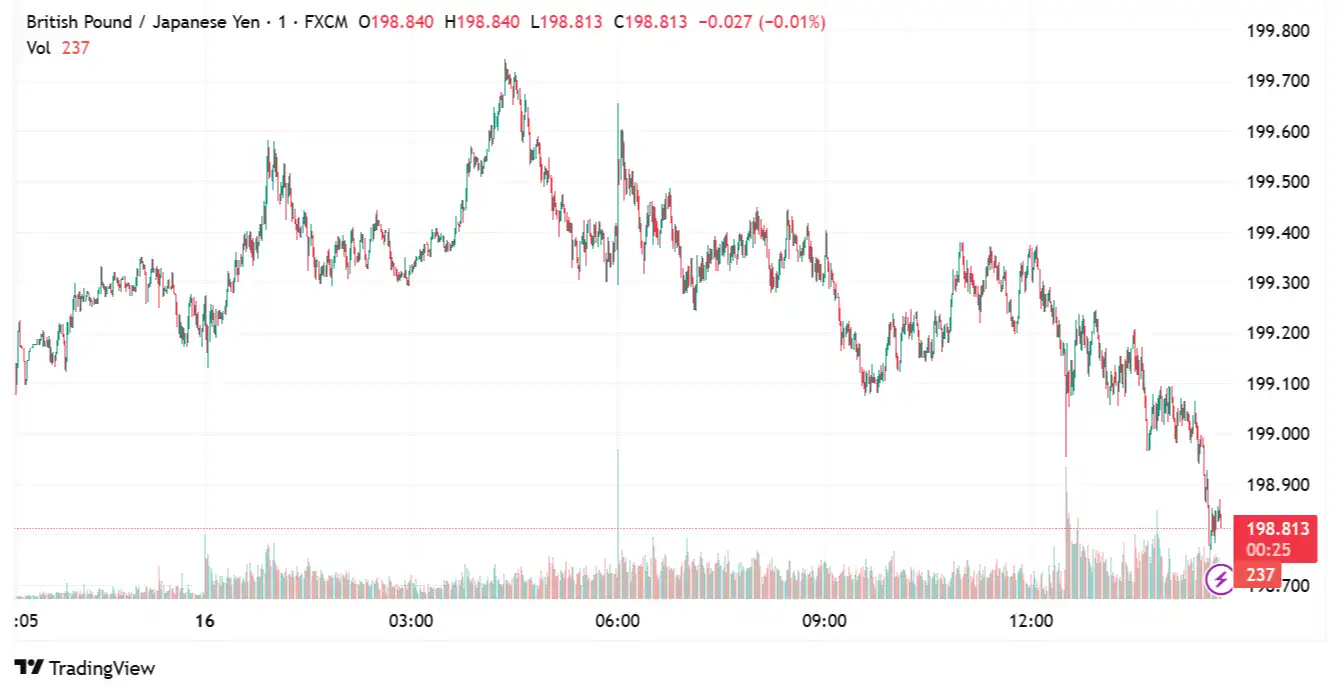
NZD/USD Sinks Ahead of US PPI Release
NZD/USD lost ground near 0.5945, as a better-than-expected China Gross Domestic Product (GDP) report lent support to the China-proxy Kiwi. China's economy grew by an annual rate of 5.2% in the second quarter (Q2) of 2025, slightly below the 5.4% growth in the first quarter, but beating market forecasts of 5.1%, according to official data published by the National Bureau of Statistics (NBS) on Tuesday. On a quarterly basis, the Chinese Gross Domestic Product (GDP) increased by 1.1% in Q2, down from 1.2% in the previous quarter, yet still exceeding the market consensus of 0.9%. China's annual retail sales in June rose by 4.8%, compared to an expected 5.6% and 6.4% in the prior period, while industrial production reached 6.8%, versus an estimate of 5.6% and May's 5.8%. Meanwhile, fixed asset investment increased by 2.8% year-to-date (YTD) on a year-over-year (YoY) basis in June, compared to the expected and previous figure of 3.7%.
Monday's China's trade balance reached CNY 585.96 billion in June, narrowing from the previous figure of CNY 743.56 billion. Chinese exports rose by 7.2% year-on-year in June, following a 6.3% increase in April. Meanwhile, imports grew by 2.3% year-on-year in the same period, recovering from a prior decline of 2.1%. In US dollars (USD), China's trade surplus expanded more than expected in June. Trade balance came in at +114.77 billion versus +109 billion expected and +103.22 billion previous figure. Exports increased by 5.8% year-on-year compared to the 5% expected and 4.8% previously. Imports rose by 1.1% year-on-year against an expected 1.3% and the previous decline of 3.4%. Chinese Vice Premier He Lifeng stated on Wednesday that officials are intensifying efforts to stimulate consumption and bolster the Chinese economy. Moreover, the market anticipates that the Reserve Bank of New Zealand (RBNZ) will deliver further rate cuts in the upcoming meetings, driven by subdued activity in both the manufacturing and services sectors.
On the USD front, a higher inflation number reignited concerns about prolonged high interest rates from the Fed. The US Bureau of Labour Statistics reported that the headline Consumer Price Index (CPI) rose 0.3% in June and the yearly rate accelerated to 2.7% from 2.4% in May. Meanwhile, the core gauge, which excludes fluctuating food and energy costs, increased by 2.9% from 2.8% prior, lifting US Treasury bond yields to their highest levels in several weeks. Boston Fed President Susan Collins observed that setting monetary policy is challenging at present due to uncertainty, and a robust economy provides the US central bank with time to determine its next interest rate decision. Additionally, tariffs could increase inflation during the second half of 2025 and raise core inflation to approximately 3% by the end of the year, according to Boston. Separately, Dallas Fed President Lorie Logan stated that the baseline view is that monetary policy needs to remain tight for a longer period to reduce inflation. Logan also noted that tariff increases are likely to generate further inflationary pressure for some time, and an early rate cut by the Fed risks causing deeper economic scars on a longer journey towards price stability.
Investors will keep an eye on the US Producer Price Index (PPI) later on Wednesday, along with the Fed Beige Book and Industrial Production, for fresh insights on the NZD/USD exchange rate.
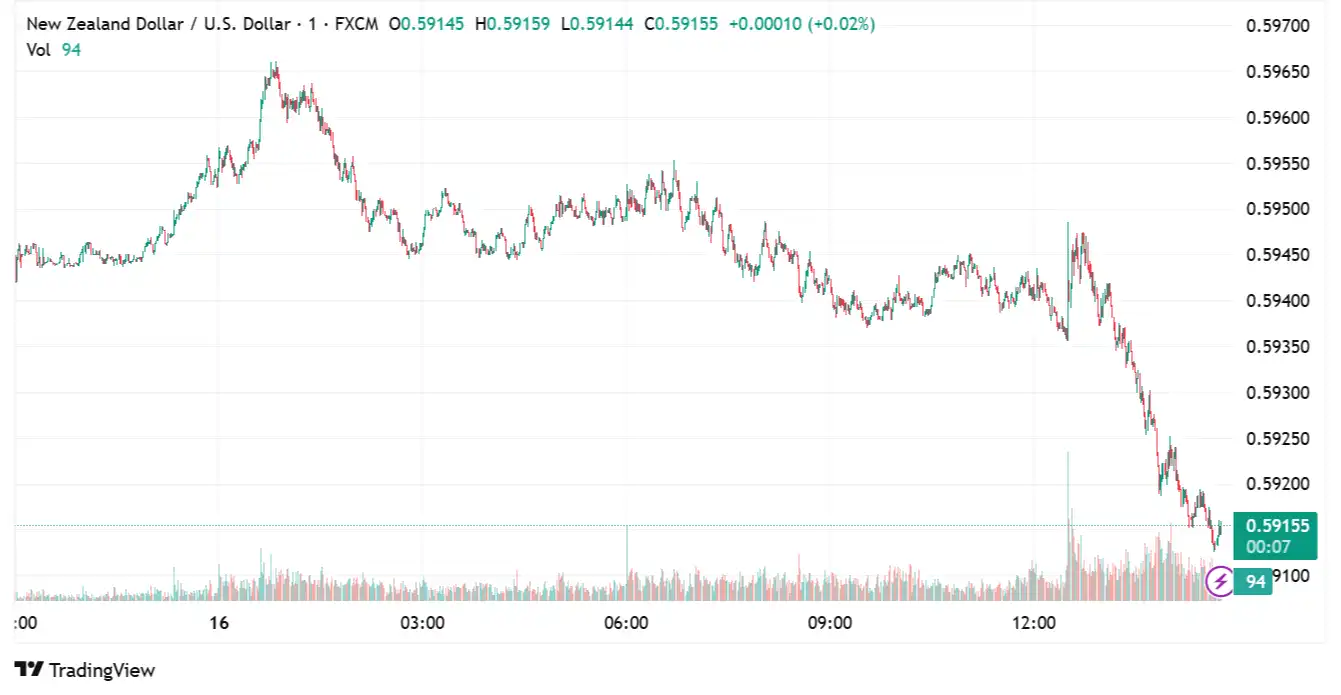
Stay Ahead in the Currency Game
Whether you're a daily FX trader or handle international transactions regularly, our 'Currency Pulse' newsletter delivers the news you need to make more informed decisions. Receive concise updates and in-depth insights directly in your LinkedIn feed.
Subscribe to 'Currency Pulse' now and never miss a beat in the currency markets!
Ready to act on today’s insights? Get a free quote or give us a call on: +44 (0)20 7740 0000 to connect with a dedicated portfolio manager for tailored support.
Important Disclaimer: This blog is for informational purposes only and should not be considered financial advice. Currency Solutions does not take into account the investment objectives, financial situation, or specific needs of any individual readers. We do not endorse or recommend any specific financial strategies, products, or services mentioned in this content. All information is provided “as is” without any representations or warranties, express or implied, regarding its accuracy, completeness, or timeliness.




